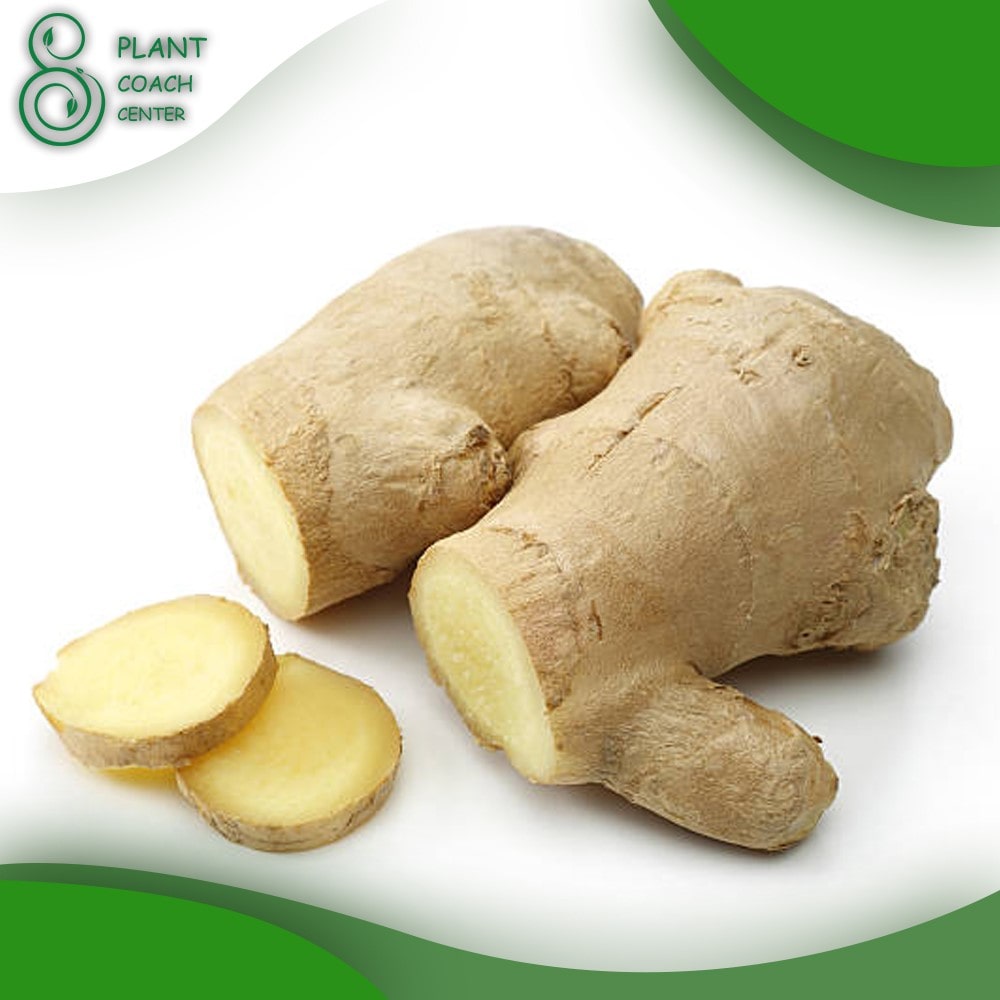Introduction to when to Plant Ginger
– The Popularity of Ginger
– Benefits of Growing Ginger at Home
– Factors Affecting Ginger Planting
Ginger is a versatile and widely used spice known for its distinctive flavor and numerous health benefits. Planting ginger in your own garden can be a rewarding experience, allowing you to enjoy the freshness and convenience of homegrown ginger.
In this article, we will explore the essential aspects of when to plant ginger, taking into account various factors such as climate, soil conditions, and geographic considerations. Whether you’re a seasoned gardener or a beginner, this comprehensive guide will help you successfully grow ginger. For more information on gardening and plant-related topics, you can visit plantcoachcenter.com.
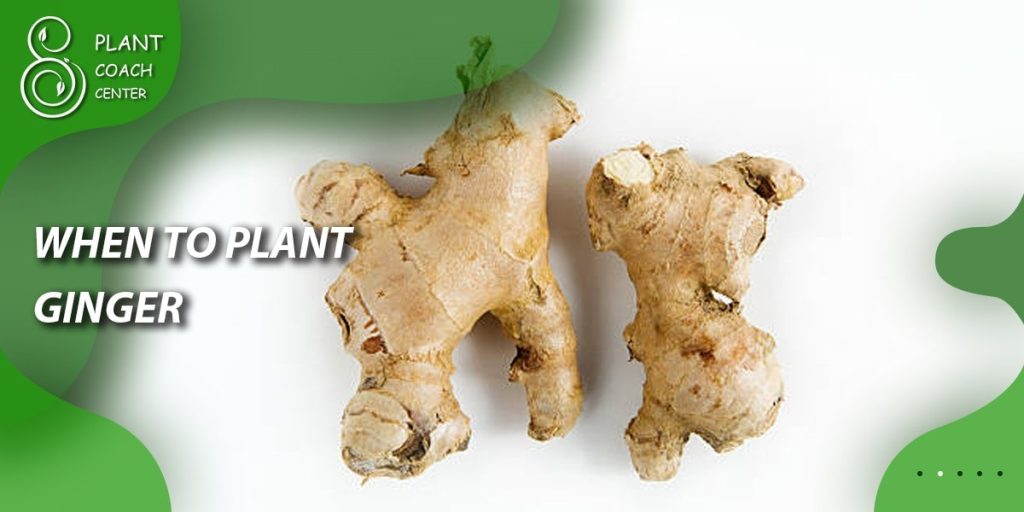
Understanding Ginger Plants
– Ginger Plant Overview
– Varieties of Ginger
– Growth Cycle of Ginger
Before diving into the specifics of planting ginger, it’s important to understand the plant itself. Ginger (Zingier officinal) belongs to the Zingiberaceae family and is native to Southeast Asia. It is a tropical perennial plant that thrives in warm and humid conditions. Ginger plants consist of rhizomes, which are underground stems that store nutrients for growth.
There are various ginger varieties available, each with its unique characteristics and flavors. The most common types include yellow ginger, white ginger, and blue-ring ginger. Understanding the growth cycle of ginger is crucial for determining the appropriate planting time and ensuring a successful harvest.
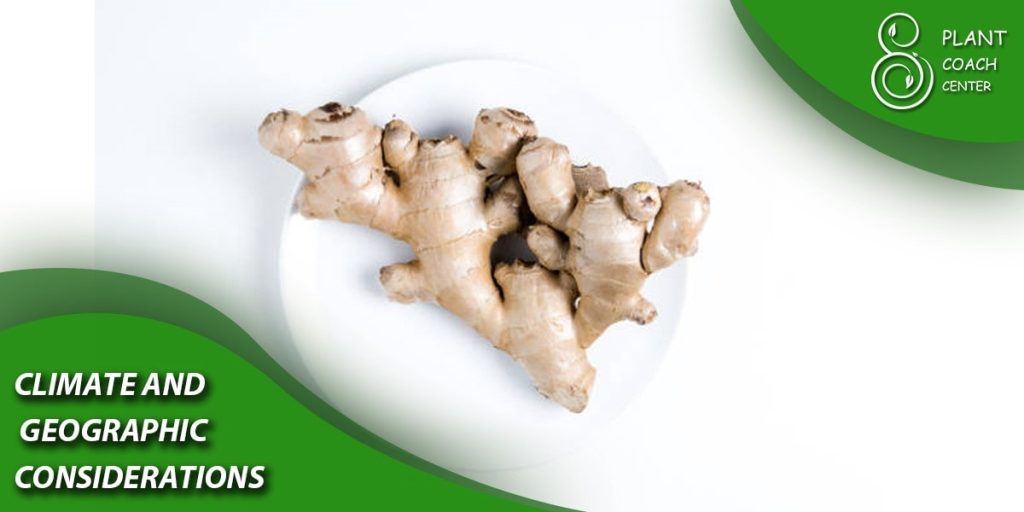
Climate and Geographic Considerations
– Ginger’s Preferred Climate
– Adaptability to Different Regions
– Identifying Optimal Geographic Conditions
Ginger plants prefer a warm and tropical climate, with temperatures ranging between 70°F and 90°F (21°C to 32°C). They thrive in areas with high humidity and consistent rainfall. However, ginger can also be grown in subtropical regions with some adjustments and care.
When selecting a location for planting ginger, consider the microclimate of your area. Look for areas that receive ample sunlight, have good air circulation, and are protected from strong winds. Understanding the specific climatic requirements of ginger will help you determine whether your region is suitable for its cultivation.
Soil Preparation and Requirements
– Soil Composition for Ginger Planting
– pH Levels and Soil Testing
– Organic Matter and Nutrient Enrichment
Preparing the soil is a crucial step in ensuring the healthy growth of ginger plants. Ginger prefers loose, well-draining soil that is rich in organic matter. Here are some important considerations for soil preparation:
– Soil Composition: Ginger plants thrive in loamy or sandy soil that allows proper root development and water drainage. Avoid heavy clay soils that can lead to waterlogging and root rot.
– pH Levels: The ideal soil pH for ginger cultivation is slightly acidic to neutral, ranging from 6.0 to 7.0. Conduct a soil test to determine the pH level of your soil and make necessary amendments to achieve the optimal range.
– Organic Matter and Nutrient Enrichment: Adding organic matter such as compost, well-rotted manure, or leaf mold improves soil structure and provides essential nutrients. Prior to planting, incorporate organic matter into the soil to enhance fertility and promote healthy plant growth.
Choosing and Preparing Ginger Rhizomes
– Selecting Quality Ginger Rhizomes
– Preparing Ginger Rhizomes for Planting
– Pre-Sprouting Techniques
Choosing high-quality ginger rhizomes is crucial for successful planting. Select rhizomes that are firm, plump, and free from any signs of decay or damage. Look for pieces with well-developed buds or “eyes.” You can find suitable ginger rhizomes at local nurseries, garden centers, or online suppliers specializing in plant materials.
Before planting, it’s beneficial to prepare the ginger rhizomes to encourage healthy sprouting and growth. Follow these steps to prepare ginger rhizomes for planting:
- Soaking: Place the ginger rhizomes in warm water for a few hours to rehydrate them and promote sprouting.
- Cutting and Dividing: If your ginger rhizome is large, you can divide it into smaller pieces, ensuring each piece has at least one or two buds or “eyes.” Use a clean, sharp knife for cutting.
- Drying: Allow the cut surfaces of the rhizomes to dry for a day or two before planting. This helps prevent rotting and fungal infections.
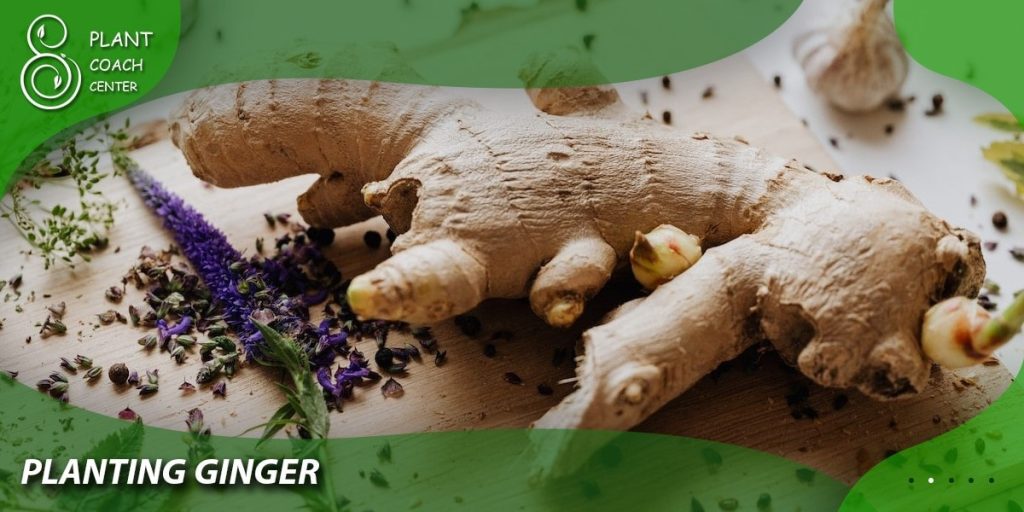
Planting Ginger: Steps and Techniques
Site Selection and Preparation
When selecting a site for planting ginger, consider the following factors:
– Sunlight: Ginger plants require partial shade to full sunlight. Choose a location that receives at least 4-6 hours of direct sunlight per day.
– Protection: Ensure the site is protected from strong winds, as they can damage the ginger plants.
– Drainage: Good drainage is essential to prevent waterlogging, which can lead to root rot. Avoid areas with poor drainage or consider raised beds or containers for planting.
Prepare the site by removing any weeds or debris and loosening the soil to a depth of about 8-10 inches (20-25 cm). Incorporate organic matter, such as compost or well-rotted manure, into the soil to improve its structure and fertility.
Planting Methods
Ginger can be planted using different methods, including:
– Direct Planting: Dig holes in the prepared soil, ensuring they are deep enough to accommodate the ginger rhizomes. Place the rhizomes horizontally, with the buds facing up, and cover them with soil. Space the rhizomes about 8-12 inches (20-30 cm) apart in rows with a distance of 24-36 inches (60-90 cm) between the rows.
– Container Planting: If you have limited garden space or want to grow ginger indoors, you can use containers. Choose a large container with drainage holes and fill it with well-draining potting soil. Plant the ginger rhizomes as described above, ensuring there is enough space for the roots to grow. Place the container in a location that receives adequate sunlight.
Spacing and Depth Guidelines
Proper spacing and planting depth are important for the healthy development of ginger plants. Follow these guidelines:
– Space the ginger rhizomes 8-12 inches (20-30 cm) apart to allow room for the plants to spread.
– Plant the rhizomes at a depth of 2-4 inches (5-10 cm) with the buds facing up. Ensure the rhizomes are well-covered with soil but not buried too deep.
Maintain consistent moisture in the soil without overwatering, as excessive moisture can lead to rotting. Water the newly planted ginger gently but thoroughly, and then monitor the soil moisture throughout the growing season.
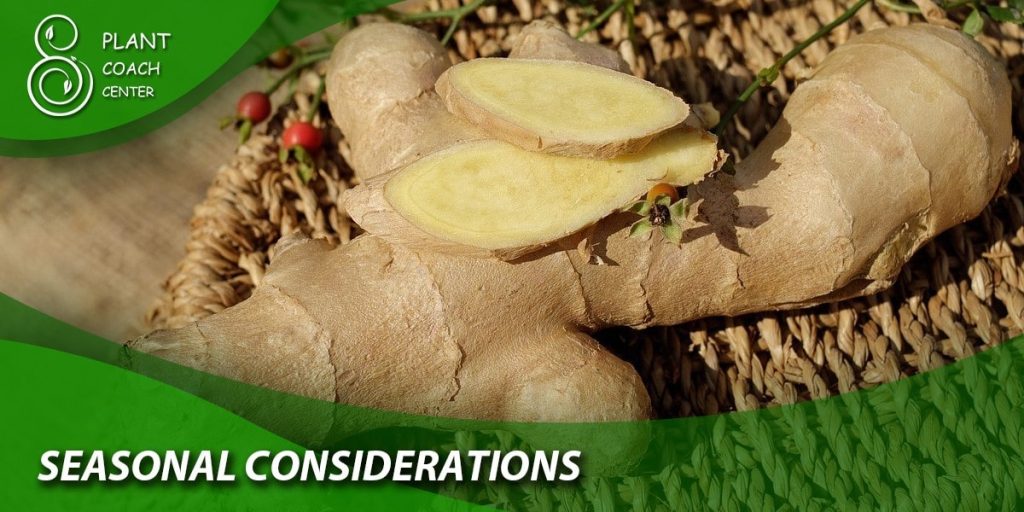
Seasonal Considerations: When to Plant Ginger
– Spring Planting: Pros and Cons
– Summer Planting: Benefits and Challenges
– Fall/Winter Planting: Advantages and Precautions
The timing of ginger planting depends on the season and climate in your region. Let’s explore the considerations for each season:
Spring Planting: Pros and Cons
– Pros: Spring provides favorable conditions for ginger growth, with increasing temperatures and longer daylight hours. Planting in spring allows the ginger plants to establish themselves before the hot summer months.
– Cons: In some regions, spring can still be unpredictable, with fluctuations in temperature and occasional late frosts. Ensure the risk of frost has passed before planting ginger in spring.
Summer Planting: Benefits and Challenges
– Benefits: Planting ginger in summer takes advantage of the warm temperatures, which promote faster growth. The longer days provide ample sunlight for photosynthesis and plant development.
– Challenges: Summer planting requires careful attention to watering, as the heat can quickly dry out the soil. Regular irrigation and mulching are necessary to maintain adequate moisture levels.
Fall/Winter Planting: Advantages and Precautions
– Advantages: Fall/winter planting allows ginger to establish strong root systems during the cooler months. The plants remain dormant or grow slowly during winter, preparing for vigorous growth in the following spring.
– Precautions: In colder regions, protect the ginger plants from frost by covering them with mulch or using row covers. Monitor soil moisture to prevent waterlogging during winter rains.
Caring for Ginger Plants
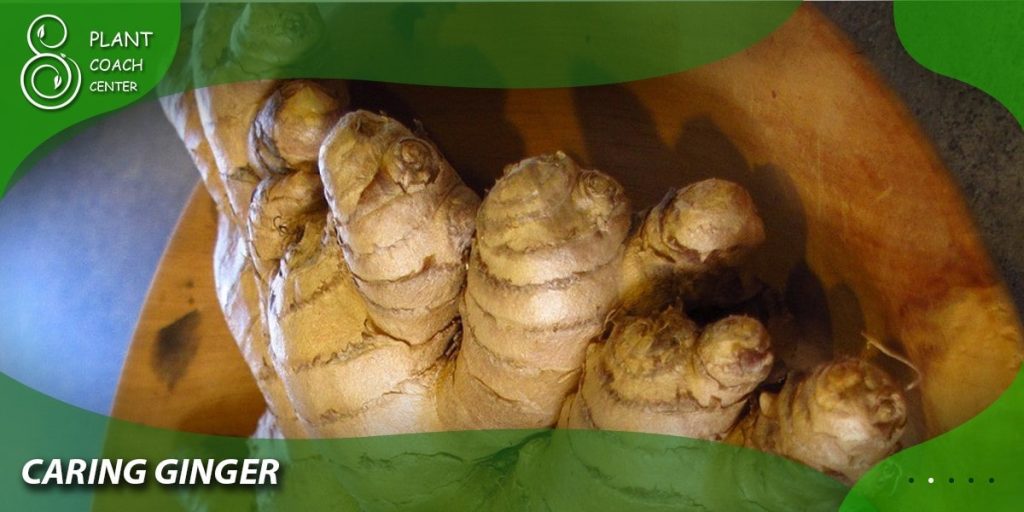
– Watering Requirements
– Fertilization and Nutrient Needs
– Weed Control and Mulching
– Pest and Disease Management
Watering Requirements
Proper watering is crucial for the growth and development of ginger plants. Here are some guidelines to follow:
– Moisture: Ginger plants prefer consistently moist soil. Water them regularly, especially during dry spells, to keep the soil evenly moist. Avoid overwatering, as it can lead to root rot.
– Watering Techniques: Use a watering can or a gentle spray nozzle to provide a steady flow of water directly to the soil. Avoid wetting the foliage excessively, as it can promote disease.
– Mulching: Apply a layer of organic mulch, such as straw or wood chips, around the ginger plants. Mulching helps retain soil moisture, suppresses weed growth, and regulates soil temperature.
Fertilization and Nutrient Needs
To ensure healthy growth and a bountiful harvest, ginger plants require regular fertilization. Consider the following:
– Soil Test: Conduct a soil test to identify any nutrient deficiencies. This will guide you in selecting the appropriate fertilizer and determine the required application rate.
– Organic Fertilizers: Use organic fertilizers, such as compost or well-rotted manure, to provide a slow-release source of nutrients. Apply the fertilizer according to the recommended dosage and timing.
– Top-Dressing: Apply the fertilizer around the base of the plants, taking care not to let it come into direct contact with the rhizomes. Water the plants after fertilization to help distribute the nutrients.
Weed Control and Mulching
Keeping the planting area free from weeds is essential for the health and productivity of ginger plants. Follow these practices:
– Mulching: As mentioned earlier, mulching helps suppress weed growth by blocking sunlight and preventing weed seeds from germinating. Apply a thick layer of mulch around the ginger plants, avoiding direct contact with the stems.
– Hand Weeding: Regularly inspect the planting area and manually remove any emerging weeds. Be gentle to avoid disturbing the ginger rhizomes or their shallow root systems.
– Avoid Herbicides: Since ginger is an edible crop, it is best to refrain from using herbicides or any chemical weed control methods that may leave residues.
Pest and Disease Management
Ginger plants are generally resilient against pests and diseases. However, it’s important to remain vigilant and take appropriate measures if any issues arise. Here are some common problems and their management strategies:
– Common Pests: Watch out for pests like aphids, mealybugs, and spider mites. Regularly inspect the plants and manually remove any visible pests. In severe cases, consider using organic pest control methods such as insecticidal soap or neem oil.
– Diseases: Ginger is susceptible to fungal diseases such as root rot and leaf spot. To prevent these diseases, maintain proper soil drainage, avoid overwatering, and provide adequate air circulation. If necessary, apply organic fungicides following the manufacturer’s instructions.
– Viral Infections: Viral diseases can affect ginger plants, causing stunted growth or yellowing leaves. Unfortunately, there are no specific treatments for viral infections. Remove and destroy infected plants to prevent the spread of the virus to healthy ones.

Harvesting Ginger
– Signs of Maturity
– Harvesting Techniques
– Curing and Storing Ginger
Signs of Maturity
Ginger is typically ready for harvesting when the foliage begins to yellow and die back. The signs of maturity include:
– Foliage Color: As the ginger plants mature, the leaves turn yellow and start to wither. This indicates that the plant has completed its growth cycle.
– Rhizome Size: Mature ginger rhizomes are plump, firm, and have well-developed nodes and buds. Avoid harvesting ginger too early, as it may result in smaller and less flavorful rhizomes.
Harvesting Techniques
Follow these steps to harvest ginger properly:
- Prepare the Area: Before harvesting, gently remove any mulch or debris around the ginger plants to expose the rhizomes.
- Loosen the Soil: Use a garden fork or a spade to loosen the soil around the base of the plants. Take care not to damage the rhizomes.
- Lift the Rhizomes: Starting from the outside of the plant, carefully lift the rhizomes by digging underneath them. Lift the entire clump, including the connected rhizomes.
- Remove Soil: Gently shake off the excess soil from the rhizomes. Avoid washing them at this stage, as it can reduce their shelf life.
Curing and Storing Ginger
To enhance the flavor and shelf life of harvested ginger, follow these curing and storage practices:
- Drying: Allow the freshly harvested ginger to air dry for a few daysin a warm, well-ventilated area. This will help remove excess moisture and toughen the skin.
- Trimming: Once the ginger has dried, use a clean, sharp knife to trim off any remaining foliage or roots. Be careful not to cut into the rhizomes.
- Storage: Store cured ginger in a cool, dry place. You can keep them in a mesh bag or a paper bag to allow for air circulation. Avoid storing ginger in the refrigerator, as the moisture can cause it to rot.
- Freezing: If you have a surplus of ginger, you can also freeze it for long-term storage. Peel the ginger and grate or slice it into small pieces. Place the ginger in an airtight container or freezer bag and store it in the freezer. Frozen ginger can be used directly in recipes without thawing.
Conclusion
Growing ginger plants can be a rewarding experience, whether you are a seasoned gardener or a beginner. By providing the right growing conditions, regular care, and proper harvesting techniques, you can enjoy a bountiful harvest of fresh, flavorful ginger. Experiment with incorporating ginger into your culinary creations and explore its many health benefits. Happy gardening and happy cooking!
When is the best time to plant ginger?
Spring.
Can ginger be planted in the fall?
No.
What is the ideal season for ginger planting?
Spring.
Can ginger be planted year-round?
No, it is best to plant ginger in spring.


